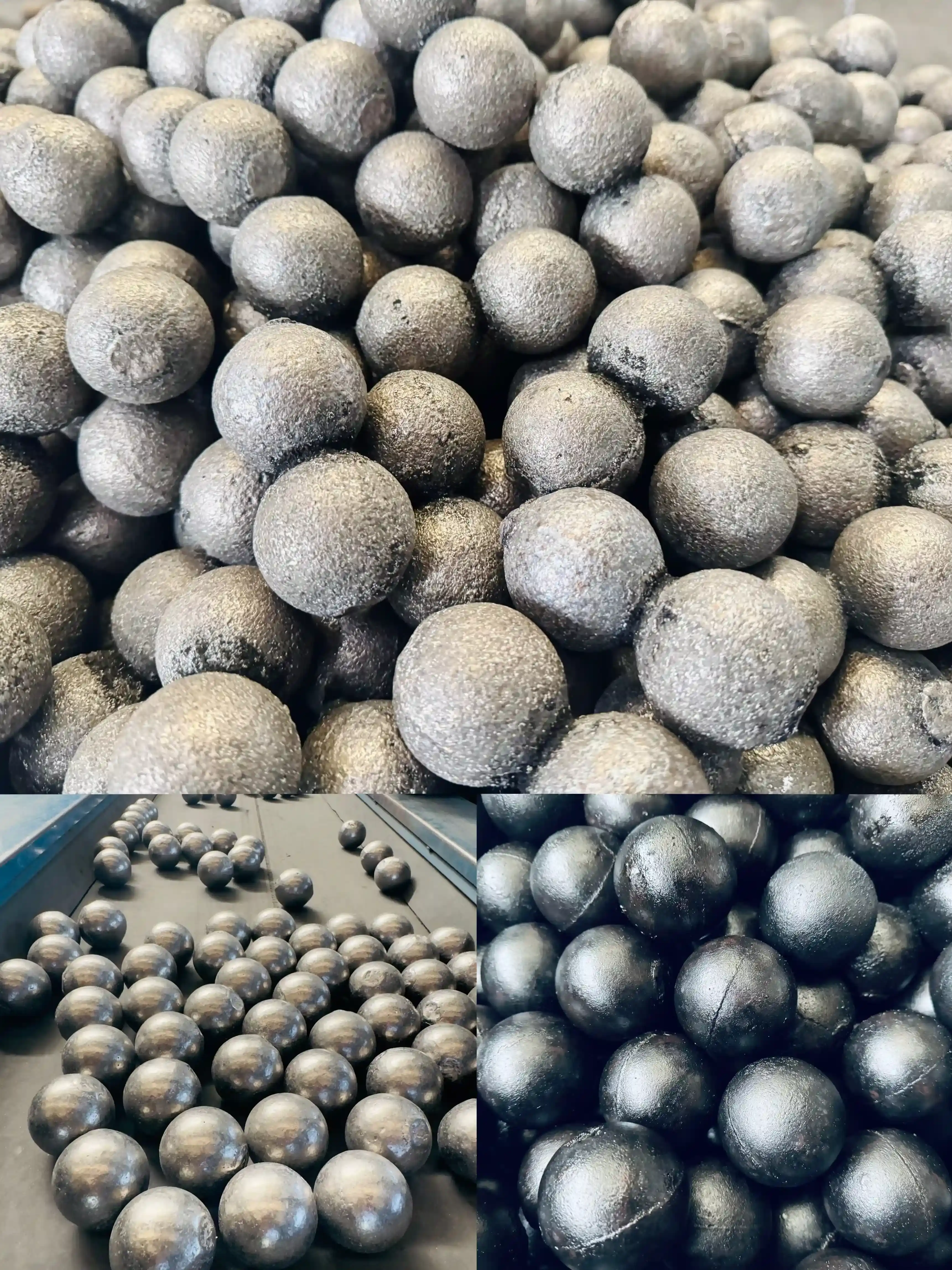In the world of industrial processing, ball mills play a crucial role in reducing materials to fine powders. At the heart of these mills lie the unsung heroes: grinding media. These small but mighty components are essential for efficient material reduction across various industries. In this comprehensive guide, we'll delve into the intricacies of grinding media in ball mills, exploring their shapes, sizes, materials, and how to choose the right ones for your specific needs.

Understanding Grinding Media Shapes and Sizes
The shape and size of grinding media significantly impact the efficiency and effectiveness of the milling process. Let's explore the most common shapes and sizes used in ball mills:
Spherical Grinding Media
Spherical grinding media, or grinding balls, are the most widely used shape in ball mills. Their uniform shape allows for consistent grinding action and even wear. Spherical media come in various sizes, typically ranging from 1mm to 100mm in diameter. The size selection depends on factors such as the desired particle size of the end product and the mill's dimensions.
Cylindrical Grinding Media
Cylindrical grinding media, also known as cylpebs, offer a unique grinding action. Their shape provides a larger surface area for grinding compared to spheres of the same volume. Cylpebs are particularly effective in fine grinding applications and can help reduce energy consumption in certain milling operations.
Choosing the Right Size
Selecting the appropriate size of grinding media in ball mill is crucial for optimal milling performance. Generally, larger media are used for coarse grinding, while smaller media are preferred for fine grinding. The size of the media should be proportional to the feed material size and the desired end product size. A well-designed mill will often use a combination of media sizes to achieve the best results.
How Grinding Media Materials Influence Milling Results
The material composition of grinding media plays a vital role in determining the milling outcome. Different materials offer varying levels of hardness, density, and wear resistance. Let's examine some common grinding media materials and their characteristics:
Steel Grinding Media
Steel is one of the most popular materials for grinding media due to its high density and durability. Steel grinding media come in various grades, including low chrome, medium chrome, and high chrome. The chrome content affects the hardness and wear resistance of the media.
- Low Chrome Steel: Suitable for general-purpose grinding, offering a balance between hardness and cost-effectiveness.
- Medium Chrome Steel: Provides increased wear resistance compared to low chrome steel, making it ideal for moderately abrasive materials.
- High Chrome Steel: Offers the highest wear resistance among steel media, making it perfect for grinding highly abrasive materials.
Ceramic Grinding Media
Ceramic grinding media are gaining popularity in certain applications due to their unique properties. They are lighter than steel media and offer excellent wear resistance. Ceramic media are particularly useful in applications where metal contamination must be minimized, such as in the production of electronic materials or certain chemicals.
Factors Influencing Material Selection
When choosing the material for your grinding media in ball mill, consider the following factors:
- Hardness of the material being ground
- Desired end product purity
- Operating conditions (e.g., temperature, pH)
- Energy efficiency requirements
- Cost considerations
Choosing the Right Grinding Media for Your Industry
Different industries have unique requirements when it comes to grinding media. Let's explore some industry-specific considerations:
Mining and Mineral Processing
In the mining industry, grinding media in ball mills need to be tough and wear-resistant to handle abrasive ores. High chrome steel balls are often the go-to choice for their durability and ability to maintain their spherical shape over time. The size of the media is typically larger in primary grinding stages and decreases in secondary and tertiary grinding circuits.
Cement Production
Cement manufacturing requires efficient grinding of clinker and other materials. Steel grinding media, particularly forged steel balls, are commonly used due to their high density and impact resistance. The media size distribution is carefully selected to optimize the grinding efficiency and product fineness.
Chemical and Pharmaceutical Industries
In chemical and pharmaceutical applications, product purity is paramount. Ceramic grinding media or high-purity steel media are often preferred to minimize contamination. The choice between ceramic and steel often depends on the specific chemical compatibility requirements and the desired grinding efficiency.
Advanced Materials and Electronics
For grinding advanced materials like ceramics or electronic components, high-purity alumina or zirconia grinding media are often used. These materials offer excellent wear resistance and chemical inertness, ensuring the final product meets stringent purity requirements.
Selecting the right grinding media in ball mill is crucial for achieving optimal performance and product quality. Factors such as material properties, desired end product characteristics, and operational efficiency all play a role in making the best choice. At NINGHU, we specialize in providing high-quality grinding media solutions tailored to your specific industry needs.
Our team of experts can help you determine the ideal grinding media configuration for your ball mill, ensuring maximum efficiency and product quality. Whether you need high chrome steel balls for mining applications or ceramic media for pharmaceutical processing, we have the expertise and products to meet your requirements.
Don't let suboptimal grinding media hold back your production. Contact us today at sales@da-yang.com or sunny@da-yang.com to discover how our grinding media in ball mills can revolutionize your milling process. Let's work together to optimize your grinding operations and drive your business forward.
References
- Smith, J. (2022). Advanced Grinding Media Technologies for Ball Mills. Journal of Industrial Processing, 45(3), 267-282.
- Johnson, A., & Williams, R. (2021). Comparative Analysis of Steel and Ceramic Grinding Media in Mineral Processing. Mining Engineering Review, 33(2), 89-104.
- Chen, L., et al. (2023). Optimization of Grinding Media Selection for Cement Production. Cement and Concrete Research, 158, 106885.
- Thompson, E. (2020). The Impact of Grinding Media Properties on Pharmaceutical Milling Processes. International Journal of Pharmaceutics, 585, 119498.
- Rodriguez, M., & Garcia, P. (2022). Energy Efficiency in Ball Milling: The Role of Grinding Media. Energy Procedia, 180, 456-465.
- Lee, K., & Park, S. (2021). Advancements in High-Purity Grinding Media for Electronic Materials Processing. Journal of Materials Science, 56(18), 10789-10805.








